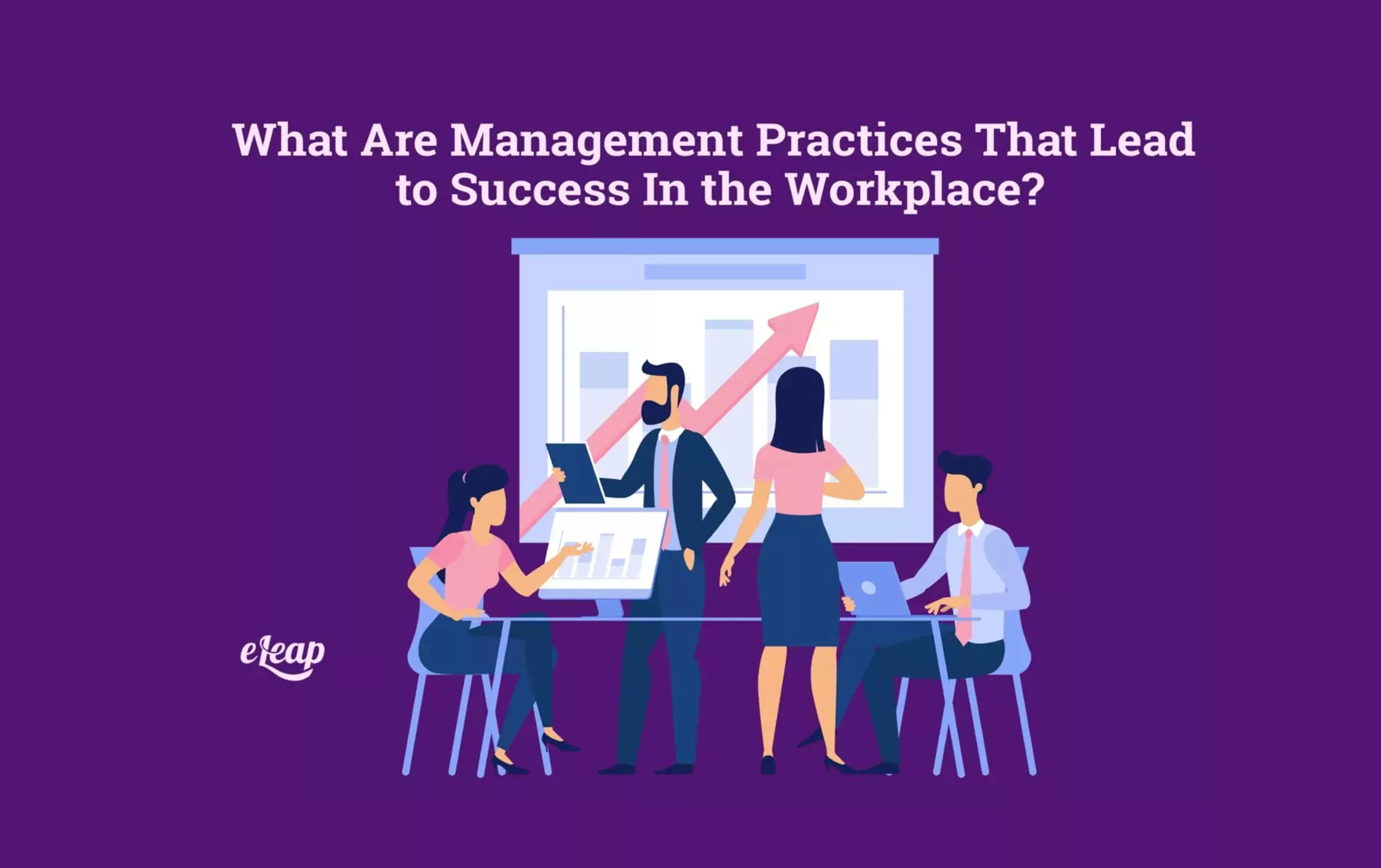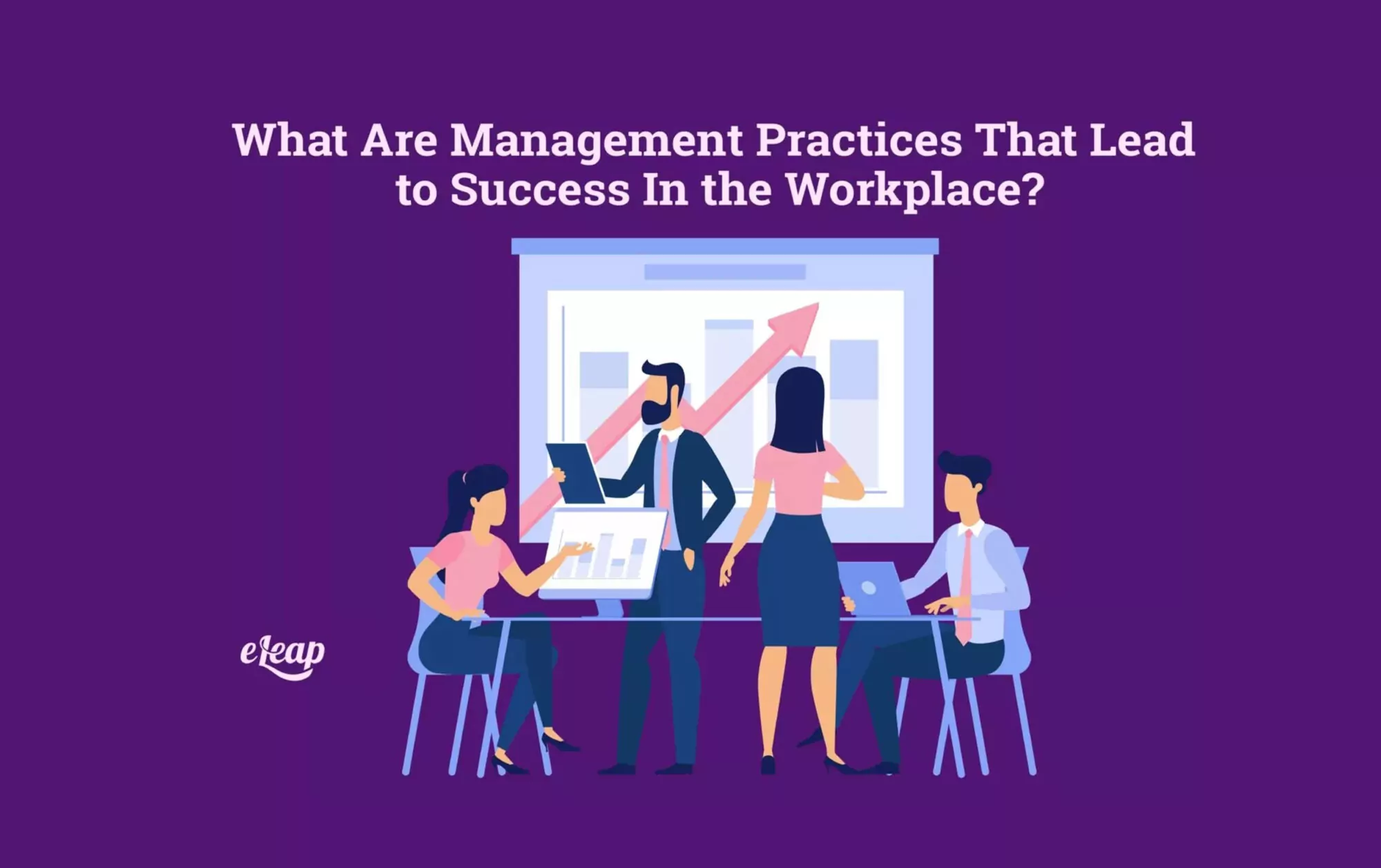What Are Management Practices That Lead to Success In the Workplace?

What are management practices that work in today’s business culture? It’s no secret that conventional management practices don’t provide the engagement and productivity desired by today’s companies. How can companies adjust their practices to facilitate greater success?
How Do You Implement Best-Self Management Practices In Your Workplace?
Before you implement best-self management practices, there are some things you first must understand. First, there are two distinctions that you must understand. Next, you must understand some essential human growth and potential concepts. Finally, you must implement a leadership strategy and specific management practices for all of your organization’s managers.
Being vs. Doing
Each person and group has an internal (invisible) state which is their being state. They also have an external (visible) state which is their doing state.
The doing state for individuals encompasses habits, practices, behaviors, speaking, creating, and writing, among other attributes. Examples of the being state for individuals include your thoughts, mindset, inspiration, energy, beliefs, and values. There are several more being attributes, but you get the idea.
For companies, the being attributes include shared values, shared purpose, shared narratives, agreements, trust, and other things. Doing attributes for companies include communication, products, services, and collaboration, among other things.
Now, businesses agree that culture is one of the critical components of success. Even ten years ago, that wasn’t the case. Many leaders were once confused about the importance of business culture. One reason for the arguments against culture’s existence was its intangibility.
Since you can’t see or touch culture, many leaders disagreed that it was essential to business success. While culture isn’t easily measured, some argue it can be sensed or felt. You can’t easily measure a thought or emotion, but no one claims they aren’t real.
These intangibles determine what we do and how we do it. For example, what mood are we in; are we open to ideas or closed-minded and defensive? In a group, culture is evidence of the entire group’s state of being.
Work culture plays a significant role in what people do and how they do it. The key to understanding is the realization that the internal states of being drive the external states of doing. Internal states should be cared for as much, if not more, than external states.
Often, when you get the being part right, the doing part will take care of itself. If the being portion of the equation is off, no manner of incentive or punishment will create the long-term outcomes you want.

Work vs. Life
The idea here is to challenge the concept of work life and separate personal life. In reality, we all only have one life. Work is simply a large part of that life. For some, that portion is more significant than it is for others.
Many leaders think they shouldn’t worry about what people do outside the office. However, if there are challenges at work, those challenges leave the office with the employee. The challenges can significantly impact the employee’s life outside the workplace.
Perhaps more important than that is if someone has issues outside of work, they will bring those challenges to the office. While it isn’t our responsibility to manage someone’s life outside work, we should be empathetic, caring, and understanding toward employees.
We need to ensure we aren’t causing our employees difficulties in caring for their life and family outside of work. We should commit to our employees thriving in their whole life.
What Are the Best-Self Management Practices?
Are you looking for what best-self management practices you should implement in your workplace? Let’s look at the five keys to supporting the people in your office in their efforts to be or become their best selves. Remember, the topics we discuss here aren’t the only ones that apply. There may be other concepts or models you wish to implement along with these suggestions.
First, we’ll list the keys we’re going to discuss, and then we’ll look at them closely.
- A Growth Mindset
- Strengths or the Zone of Genius
- Maslow’s Hierarchy and Psychological Safety
- Intrinsic Motivation
- Positive Psychology
What Is A Growth Mindset?
Carol Dweck, a psychologist from Stanford University, wrote a book called Mindset, in which she discusses “fixed mindset” and “growth mindset.” The terms come from research she performed involving children and what they perceive about themselves.
The ones with a fixed mindset think at least some, if not all, of their traits are what they will always be. That can be their personality, intelligence, or some other skill. They are fixed.
However, those with a growth mindset have differing thoughts regarding their traits. They believe that those traits can change. They can improve given a suitable timeframe.
The individuals in the study with a growth mindset were more open to challenges, more resilient, and less afraid of failing. The ones with a fixed mindset were less likely to accept challenges. They acted to protect themselves and look good. Fixed mindset individuals were less likely to excel, thrive, and grow.
Managers need to understand which of these categories their employees fit into. If you take a growth approach with someone with a fixed mindset, they could feel like you are attacking their abilities or performance. A good management team points its employees toward a foundation of a growth mindset.
How to Use Strengths to Find the Zone of Genius
Everyone can grow and evolve, but we don’t necessarily grow equally in all areas. Each individual has a unique set of abilities and talents. When you, as a manager, learn an employee’s strengths, you can point them toward their Zone of Genius.
There are four zones that we fall into with anything we do. Those are the Zone of Incompetence, the Zone of Competence, the Zone of Excellence, and the Zone of Genius. The Zone of Genius is the area where we show the greatest potential. It’s characterized by points where we lose track of time (periods of flow), and our work energizes us.
The difference between the Zone of Excellence and the Zone of Genius is sometimes hard to distinguish. The difference between the two zones is passion. The Zone of Excellence is where we’ve worked hard to perfect skills, but over time the area drains us and isn’t fulfilling. Our Zone of Genius is where our passion lies, and we find positive energy and fulfillment.
When you can facilitate an employee’s working in their Zone of Genius, the employee will be more productive. That employee will work from a passion that leads to greater job satisfaction.
Maslow’s Hierarchy and Psychological Safety
If you’ve ever taken a psychology class, you’ve heard of Abraham Maslow and his Hierarchy of Needs. Maslow observed that people are naturally designed to be and become their best selves when specific fundamental needs are met.
According to Maslow’s Hierarchy, if a lower-level need is threatened, we focus all of our attention on that need. For example, if we have self-esteem issues and feel unsafe, our focus will be on safety because it’s a lower-level need.
Managers should focus most on the portions of the pyramid that include safety, belonging, and esteem. Unfortunately, many companies unwittingly create an atmosphere where employees don’t feel safe or like they belong.
Gossip, toxicity, lack of trust, or internal politics are signs of a breakdown in the company’s culture. Our brain wants to know two things, “Am I safe?” and “Am I accepted or loved?” If either answer is perceived as no, our defense response activates.
When the needs of safety and belonging are met, we experience a state of psychological safety. This psychological safety gives rise to the belief that the team is a safe place to risk our interpersonal health. When we perceive safety and belonging, that section of our brains can relax. The relaxation leads to the ability to naturally thrive in a challenge with creativity, intuition, and passion.
We should focus on what management practices are used to design a safe culture that facilitates belonging. When we feel psychologically safe, we begin to work from our Zone of Genius with a sense of self-esteem. As long as our physiological needs are met, this sense of safety leads us into the state that Maslow called Self-Actualization, where we are becoming our best selves.
What Does It Mean to Be Intrinsically Motivated?
There are four components to intrinsic motivation: relatedness, autonomy, mastery, and purpose. Relatedness is a connection to others. Autonomy means we feel free to work on projects using our unique talents. Mastery is the ability to continue to improve at what we do, and purpose is feeling connected to something greater than ourselves.
Why should management practices focus on intrinsic motivation rather than external motivation? When someone is motivated to do their best and do outstanding work instead of inspired by a paycheck, they will perform with a higher quality of work.
Have You Heard of Positive Psychology?
Positive psychology is a field that the work of Martin Seligman has significantly influenced. Positive psychology focuses on happiness, fulfillment, and well-being in life.
When you consider how we are designed, you’ll realize that we are primarily geared toward survival rather than thriving. We consistently look for threats wherever we are; if we feel threatened, our lower functioning brain centers activate, and we can’t perform at our highest creative levels.
Positive psychology says we can retrain our brains for positivity through practices like meditation and gratitude. Hence the popularity of gratitude journals has increased. Interestingly, the positive brain is more effective than a negative, stressed, or neutral brain. Creativity, intelligence, and energy levels rise when you are in a positive state.
The Takeaway
With best-self management practices, managers should be trained to show employees that thriving in their entire lives is essential. They should create a psychologically safe environment that is designed for intrinsic motivation. Protecting the company culture from toxicity should be a priority.